Guest Blog: Seven drawing exercises by Nathan Hughes

This week’s blog is all about ways to hone your drawing skills, and is by guest blogger Nathan Hughes. I’ve provided the illustrations, and my annotations on Nathan’s blog are in italics.
7 Simple Drawing Exercises to Help Improve Your Illustrations
Are you looking to improve your drawing skills? The typical advice is “just practice.”
However, that broad advice often doesn’t help, and can leave you frustrated. So what can you do?
Below I outline seven drawing exercises you can take on that will help you deliberately improve your skills.
1. Repeat an Image Over and Over
This one involves picking an image and drawing it again and again but with a twist.
The way this exercise works is:
- Choose a picture you like and draw it on a piece of paper. Time how long it takes you.
- Draw the same image again and see if you can draw it quicker.
- Repeat this process, and continue to reduce the time.
By the end of this exercise, you will notice you are looser and more relaxed as you draw.
This exercise helps you develop efficiency and awareness of relevant forms, lines, details and the overall shape of the image. You will learn to understand an image or object as a whole because you are rapidly interpreting it.
You might find you are pleasantly surprised by the results.
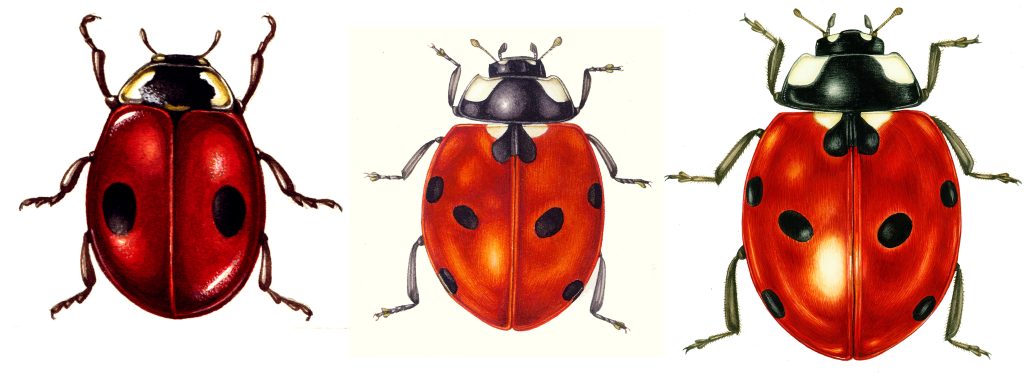
Although I’ve not done this precise excersize, I do find that the more I draw a subject the better and quicker I get at painting it. In this case, you can see my ladybird paintings from (left to right) 2000, 2007 and 20015
2. Draw from Direct Observation
The ability to draw a 2D representation of a 3D object is an essential skill for any artist. It is also a skill that needs to be exercised repeatedly
By drawing from direct observation, we are training our brain to “draw what we see, not what we know.” By drawing from life, we teach our mind to understand 3D space and form. This skill set allows us to eventually replicate and manipulate the shape of an object with it being present.
This exercise is relatively simple. Pick an interesting item to draw and set up your lighting to show exciting forms and shadows. A desk lamp can be good for this. Then start drawing.
(This video by Shaefer Art is one of many online tutorials available on drawing objects from life.)
There is often a temptation to work from a photo. Resist this urge. It might be convenient, but it can lead to bad habits.
The purpose of this exercise is to translate a 3D object into a 2D space. A photo is already 2D.
Working in 3D allows you to experience the subject in a way a photo never would. You can touch, walk around, smell and see the object within the context of its environment.
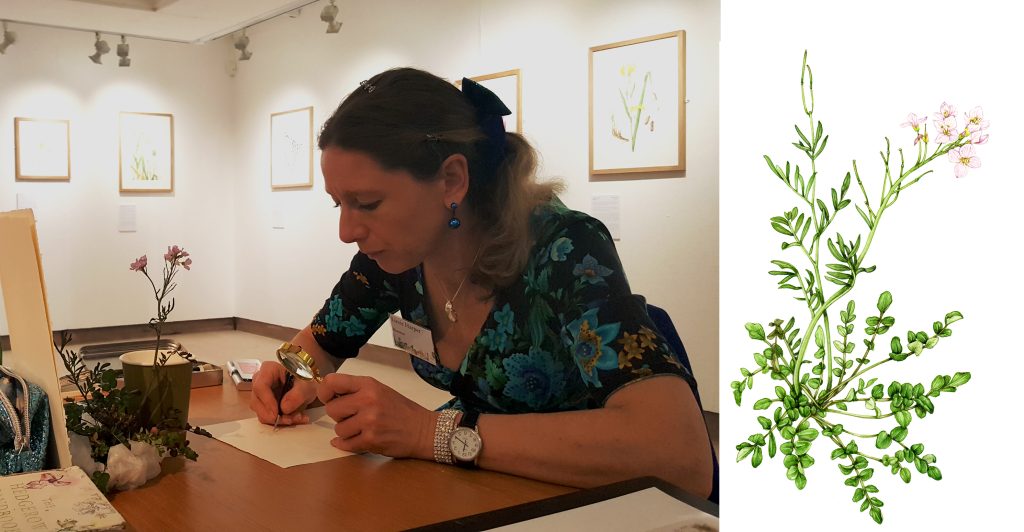 #
#
Here you can see me drawing a Ladies’ smock (Cardamine pratensis) from life; and the finished illustration alongside.
3. Tutorial Marathon
Is there a new medium or technique you have been itching to try? A tutorial marathon is a great way to tackle any new drawing skill. Dedicate a certain amount of time to learn from an excellent resource.
The key here it is to be specific about what you want to learn. Don’t take on everything from perspective, light and shadow, watercolor, ink and oils all in one sitting. Your brain won’t be able to process it.
Instead, pick one thing to focus on and spend several hours going into detail and methodically applying yourself to it. This will help you refine your art and give you a sense of progress.
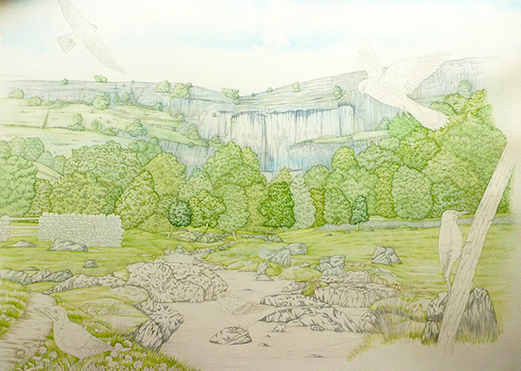
I got a commission to do a landscape many years back, and had never taken on a piece involving a landscape background before. I immediately went and got lots of watercolour landscapes together from artists I admired, and copied them to learn the technique (this was way before youtube videos!). My watercolour landscapes are still far from perfect, but are now usable. Here is a painting of Malham Cove (in progress, landscape done but not the species in the foreground).
Developing a good habit of consistent learning is important in any artist’s growth (see Andrew Price’s video at Blender for more on this).
4. Deconstruct And Simplify Structures.
Deconstruction is when you take a complex object and break it down into simpler shapes and structures. This process helps you to understand an object and as a result make it easier to represent the object in a 2D space.
To do this, find an image, object, person, animal or plan and break it down into its basic shapes and forms. This will consist of cubes, spheres, and cylinders.
By breaking down the complete form into something simpler, your brain will learn to understand how an objects space and form work.
And if you can deconstruct something, you can reconstruct it.

This shows how I simplified a daffodil into its most basic shapes, then built up a pencil drawing from these forms.
5. Construction
Construction is taking a simple representation of a complex object and then filling in the blanks.
Many artists use basic shapes and frameworks when starting a new illustration. They will then continuously refine and polish everything to produce the final outcome.

This series shows the evolution from a thumbnail to a final piece. It’s not exactly what Nathan is discussing, but it’s another way of honing and perfecting as you progress.
For example, the human form is often broken down into basic shapes. It is easier to manipulate these shapes to compose the pose you want and add details such as muscle structure, later.
Deconstruction is about finding the simple shapes that make up a form. Construction is about using that understanding to reconstruct the same object in any way you wish.
6. Experiment
This is where it can get really fun. Once you have an understanding of form and structure, you can start to experiment with it.
For example,
- You could change the shape of what you are drawing and its proportions.
- You could change the way you draw or use a different medium.
- Try different color combinations that you usually wouldn’t use.
This practice can be a lot of fun, particularly if you take on the mind frame that this is an experiment, things aren’t suppose to be perfect. You might just find something you really like, that otherwise you would have never discovered.
This exercise is perfect for someone looking to develop their own style.
Again, I haven’t really followed Nathan’s advice, a though I agree with it entirely. I don’t play about with changing proportions and colours (it would be fun to, though!); for me experimentation means painting subjects that differ from my usual fare of plants and animals. Below are two examples; portrait of a local pub, and Tutunkhamen painted for a birthday card.
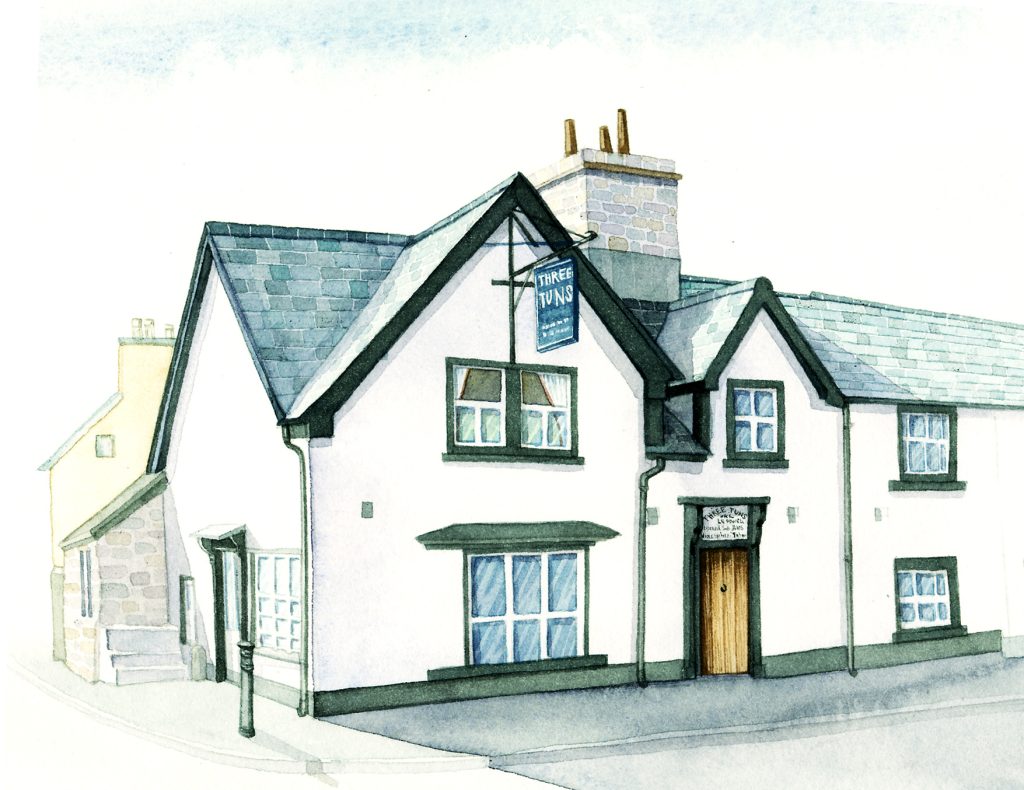
Venturing into paitning buildings…and ancinet Egyptian pharohs!
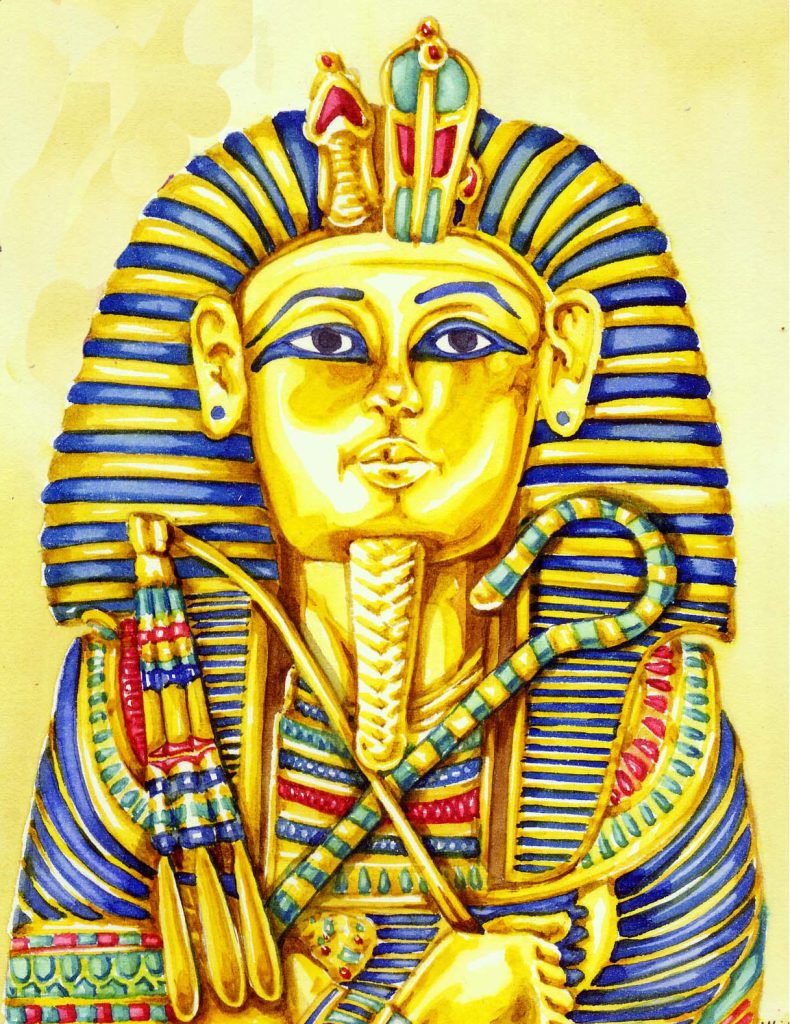
7. Tackle You Flaws
This exercise is the scariest of them all, but it is also one of the most rewarding.
Have you ever found yourself skipping particular details in your drawings? For a long time I avoiding drawing hands. Many of my figures in my drawings often held their hands in pockets or behind their back. If I did need to draw hands, they were represented by box looking structures.
Do you find you have something else you avoid? It’s completely normal to have things we are uncomfortable with. However, avoiding them can be detrimental to our artistic growth.
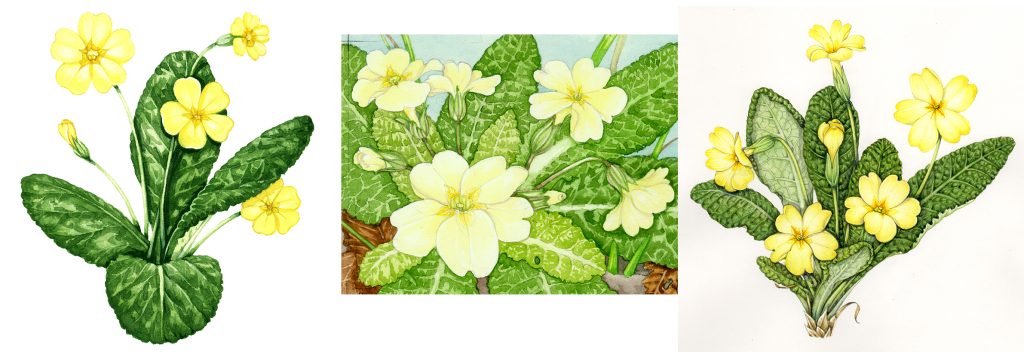
For some reason I have real trouble illustrating primroses. I know this is a problem, and I also need to improve as they’re a plant I am repeatedly asked to draw. I keep coming back to them and drawing and painting them over and over. I don’t believe I’ve sorted them out quite yet, but luckily I seem to be getting better with practice.
They key here is to set aside time to tackle each of these different aspects you are avoiding. Find some tutorials online and steadily go through them. Give yourself permission to fail.
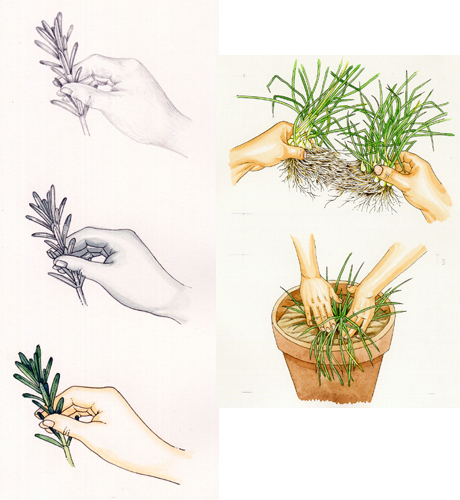
Another subject that’s hard to draw, as Nathan, says, is hands. I ned to draw them for work, and although the way I illustrate them is better than it once was, I think a little time set aside with some Youtube videos would certainly not come amiss.
It might not be easy, but it is incredibly rewarding.
Drawing and painting is not only my job, it also gives me enormous pleaure. Hopefully if you apply some or all of Nathan’s adive, you too will feel happy and confident enough to knock out drawings regularly, not be too hung up on the results, and to produce them with a flourish. This is my illustration of morning glory growing up a bamboo structure.
About The Author
These drawing exercises were initially part of the article ‘How To Practice Drawing Effectively: The Ultimate Beginners Guide’ on Art Ignition. You can find out everything from art composition to choosing the best drawing tablet at ArtIgnition.com.
Drawing is a fantastic skill to have. It can be incredibly rewarding, and it can be incredibly frustrating. But we still love it.
By taking on some of these great drawing exercises, through practice, you will be able to see massive improvements over time.
Pay attention to what works for you and what doesn’t. Don’t judge yourself and continue trying. The act of practicing is more important than the results.
Be patient and proud that you dare to put pencil to paper.
For more tips on how to draw better, you could also check out Mostcraft’s blog, or Easy draw’s online guides. There are lots of online resources, have a wade through and see which suit you best.


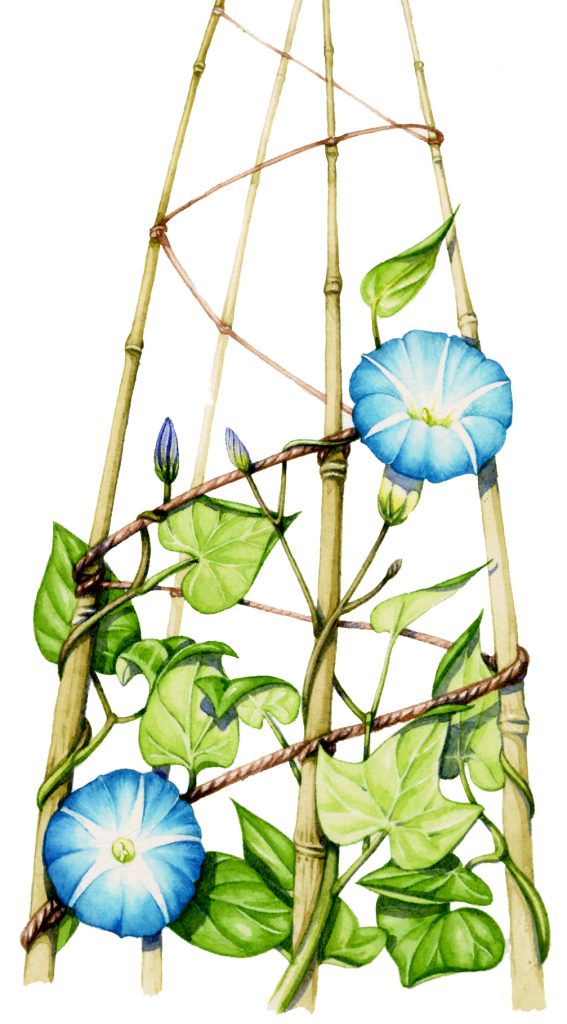
Hey would you mind sharing which blog platform you’re using?
I’m looking to start my own blog soon but I’m
having a hard time selecting between BlogEngine/Wordpress/B2evolution and Drupal.
The reason I ask is because your design and style seems different then most blogs and I’m looking for something unique.
P.S My apologies for being off-topic but I had to ask!
Hi Catherine
It’s WordPress, originally laid out by my designer friend Lapin Blanc, and now populated by yours truly. Hope this helps.